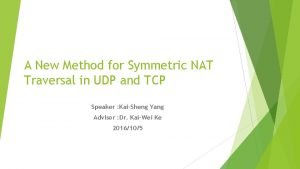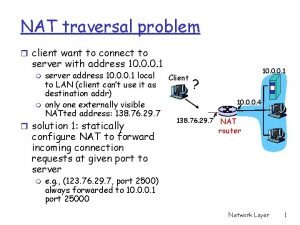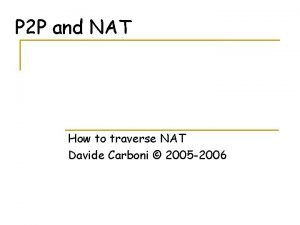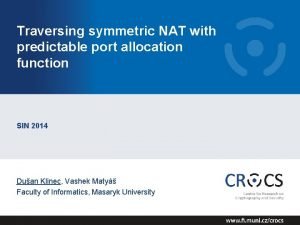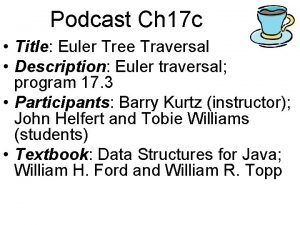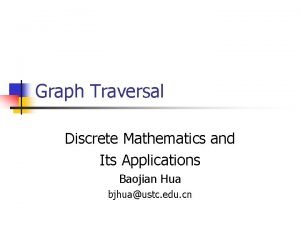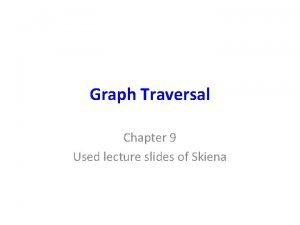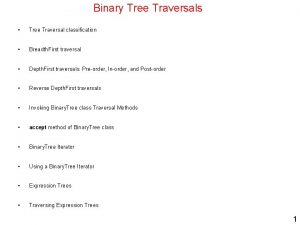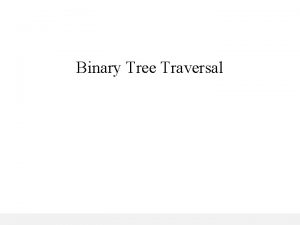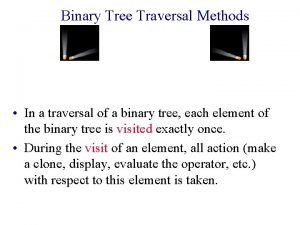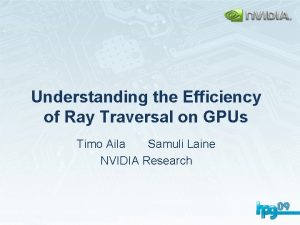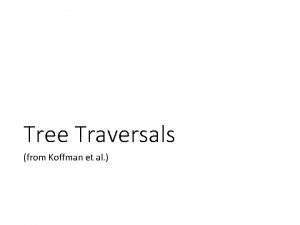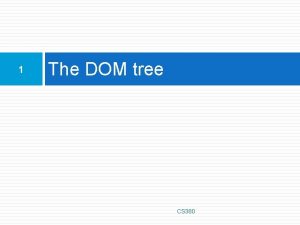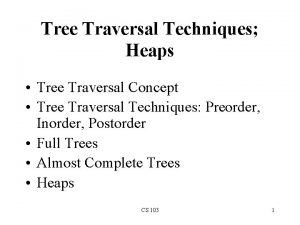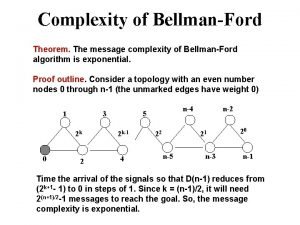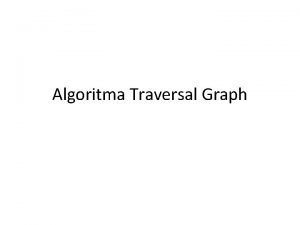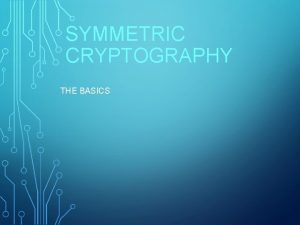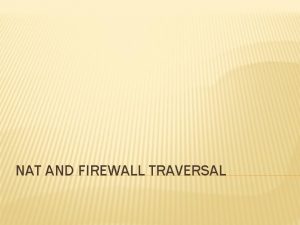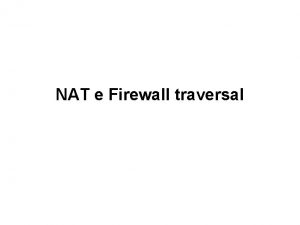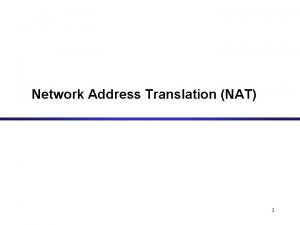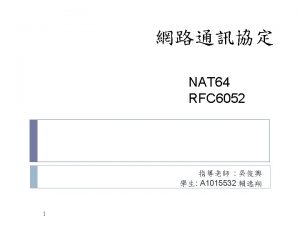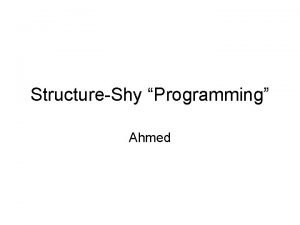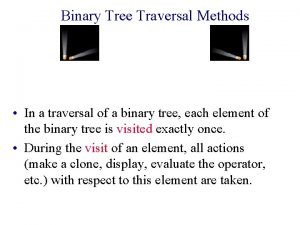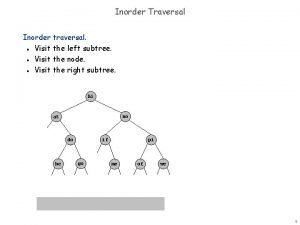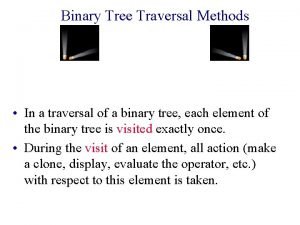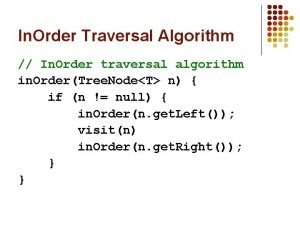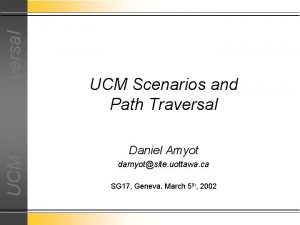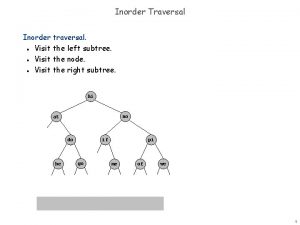A New Method for Symmetric NAT Traversal in





























- Slides: 29

A New Method for Symmetric NAT Traversal in UDP and TCP Speaker : Kai-Sheng Yang Advisor : Dr. Kai-Wei Ke 2016/10/5

Outline Network Address Translator (NAT) Existing traversal methods New method Experiment Conclusion Reference 1

Network Address Translator (NAT) Translate private IP addresses to a global IP address. Enable multiple hosts on a private network to access the Internet using a single public IP address. 2

Network Address Translator (NAT) Full Cone NAT (1 to 1) Restricted Cone NAT Port Restricted Cone NAT Symmetric NAT 3

Network Address Translator (NAT) Cont. Full Cone NAT (1 to 1) 4

Network Address Translator (NAT) Cont. Restricted Cone NAT 5

Network Address Translator (NAT) Cont. Port Restricted Cone NAT 6

Network Address Translator (NAT) Cont. Symmetric NAT Unique mapping 7

P 2 P and NAT (Problem) P 2 P networks are based on global IP address. Users cannot connect P 2 P network behind NAT devices. 8

Existing Traversal Methods UPn. P (Universal Plug and Play), ICE (Interactive Connectivity Establishment), ALG (Application Layer gateway), TURN (Traversal Using Relay NAT) … STUN (Simple Traversal of UDP through NAT) 9

Simple Traversal of UDP through NAT (STUN) No NAT traversal techniques can be successfully applied symmetric NATs. 10

New Method UDP NAT traversal : - Applicable to symmetric NATs. - Based on “Port Prediction”. 11

How to Traverse Symmetric NAT Simulate normal UDP communications - IP address and port number must correspond to NAT. 1. Establish direct communication between two end points. 2. Predict port numbers of NATs. 12

Phase 1 F 1: S 1 gets the information of a port# translated by NAT a. F 2: Send it back to the echo client. F 3: S 2 analyzes the port# of NAT a and records it. 13

Phase 2 F 5: Send it back to the echo client. F 4: S 1 gets the information of a port# translated by NAT b. F 6: S 2 analyzes the port# of NAT b and records it. 14

Phase 3 Port Prediction If NAT a uses port#700 in F 1 and port#701 in F 3, We can predict that the punching mode of NAT a is incremental and that the predicted port next number is 702 and the punching mode is Incremental. If NAT b uses port#5000 in F 4 and port#5001 in F 6, We can predict that the punching mode of NAT b is incremental and that the predicted port next number is 5002 and the punching mode is Incremental. 15

Phase 3 (cont’) 192. 168. 0. 2 133. 9. 81. 186 133. 9. 81. 62 192. 168. 0. 1 F 7: Predict a NATa’s port# for hole punching. (i. e. #702) F 8: Send a large number of packets with a low TTL value. Mapping Table of NAT b 192. 168. 0. 1: xx use port 5002 for 133. 9. 81. 186: 702 … 16

Phase 3 (cont’) 192. 168. 0. 2 133. 9. 81. 186 F 10: Echo client sends a large number of packets to the echo server. If one of the source port# of the echo client matches the destination port# mapped by NAT b, --> traverse successfully. 133. 9. 81. 62 192. 168. 0. 1 F 9: Predict a NATb’s port# for hole punching. (i. e. #5002) Mapping Table of NAT a 192. 168. 0. 2: yy use port 702 for 133. 9. 81. 62: 5002 … F 11: P 2 P connection established. 17

Phase 3 (cont’) 18

New Method: UDP Multi Hole Punching Features Normal UDP communications - Existing method uses another extra IP address. Precise port number prediction - Observe port translate algorithm: increment, decrement, leap 19

New Method: UDP Multi Hole Punching – Features (Cont. ) Control port numbers - Control random port algorithm. - Binding port numbers. Utilize many port numbers - High success rate of hole punching. 20

Experiment Use Win. Stun to determine the type of NATs. Use Wireshark to capture packets. Test the performance of the new method for UDP NAT traversal. 21

133. 9. 81. 66 133. 9. 81. 63 22

Results 9 routers tested (3 routers were Symmetric NAT). The success ratio of the P 2 P communication about our new method was 97%. Succeeded in port prediction and control of port numbers. 23

24

Results (Cont. ) Control of port numbers Random Increment 25

Conclusion Succeed in port prediction. Succeed in control of port numbers. The new method get a success rate of 97%. The high success rate can justify the overhead cost in the proposed method. 26

References Wei, Y. , Yamada, D. , Yoshida, S. , Goto, S. : A New Method for Symmetric NAT Traversal in UDP and TCP. Network 4, 8 (2008) http: //www. cs. nccu. edu. tw/~lien/Writing/NGN/f irewall. htm https: //tools. ietf. org/html/rfc 4787 27

Thanks. 28
 Nat type symmetric
Nat type symmetric Nat traversal problem solution
Nat traversal problem solution Stun hole punching
Stun hole punching Slack vs unify circuit
Slack vs unify circuit Symmetric matrix example
Symmetric matrix example Symmetric algorithms
Symmetric algorithms Symmetric nat vs full cone
Symmetric nat vs full cone Traversal algorithm in distributed system
Traversal algorithm in distributed system Bfs tree
Bfs tree Graph traversal in data structure
Graph traversal in data structure Euler tour traversal
Euler tour traversal Iterative inorder
Iterative inorder Bfs and dfs in discrete mathematics
Bfs and dfs in discrete mathematics Graph traversal methods
Graph traversal methods Breadth first search tree
Breadth first search tree Which of the following tree traversal holds for clr
Which of the following tree traversal holds for clr Binary tree traversal techniques
Binary tree traversal techniques Huffman tree visualization
Huffman tree visualization Understanding the efficiency of ray traversal on gpus
Understanding the efficiency of ray traversal on gpus Preorder traversal visualization
Preorder traversal visualization Dom cs
Dom cs Concept tree
Concept tree Balance factor of avl tree
Balance factor of avl tree Tree problem template
Tree problem template Bfs traversal
Bfs traversal Tree traversal
Tree traversal Tree
Tree Tree traversal in data structure
Tree traversal in data structure Complexity of bellman ford
Complexity of bellman ford Algoritma traversal
Algoritma traversal
